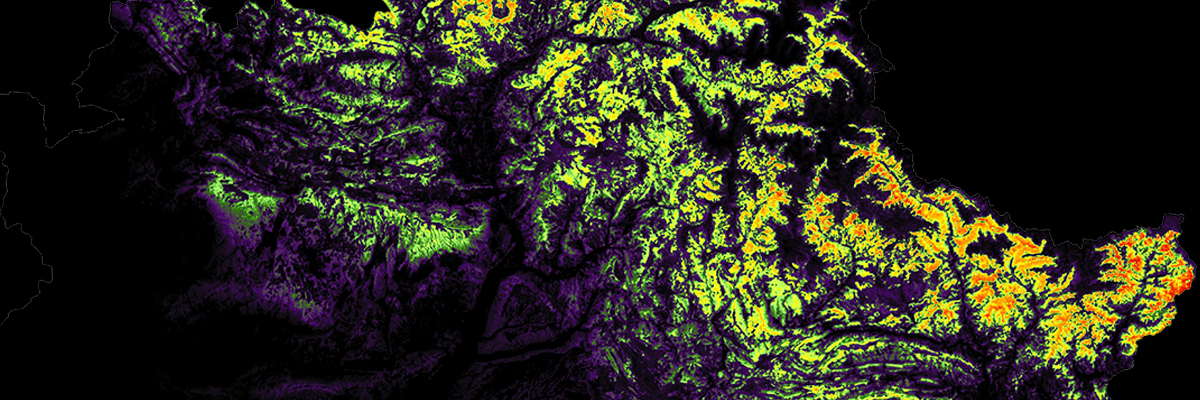









ESPACE : Étude des Structures, des Processus d’Adaptation et des Changements de l’Espace
CNRS joint research unit Nr 7300
Head of the laboratory: Didier Josselin
Launched in 1997, ESPACE (Study of Structures and Processes of Adaptation and Change in Space) is a CNRS laboratory with about 50 permanent staff (researchers, lecturers, etc.) and 40 contractual personnel (PhD candidates, post-doctoral fellows, etc.).
Most of us are geographers, but the team also includes psychologists, economists, and computer scientists. The laboratory is affiliated with two CNRS institutes, Humanities and Social Sciences (INSHS) and Ecology and Environment (INEE), and three universities: Avignon Université, Université Côte d’Azur (Nice), and Aix-Marseille Université. We also run a fieldwork centre in the Cévennes Mountains, where measurements focussing on water resources have been carried out over recent decades.
ESPACE investigates space-nature-society interactions and their sustainability. The main themes studied include: transport, urban planning, risks (water-related risks in particular), coastal territorial systems in the Mediterranean area, land and real estate, health, and the transfer-appropriation of geographical knowledge. ESPACE’s research is strongly focused on geographical theory, modelling, and on spatial analysis methods.
Laboratory lines of research
-
- A. Spatial Complexity and territorial dynamics
We examine different types of territory characterized by their marked duality, for example centre-periphery structures, the land/sea interface, or sustainable/stable-critical areas. These areas are zones with much at stake, sources of friction and even conflict. Fieldwork is mainly carried out in the Mediterranean region.
-
- B. Methods of Spatial Analysis
This research focuses on methodological developments in spatial analysis. Spatial analysis methods, whether they are tried-and-tested or recently developed, are critically assessed by being applied on the Laboratory’s research subjects. Methods refer here to a broad array of techniques ranging from protocols for dealing with geocoded data to support for stakeholders in their planning decision-making process. The aim here is to reach a wise use of methods and tools, but also to develop new methodological approaches inspired – or not – by other disciplines.
-
- C. Ecological transition, knowledge, and innovation
The research aims to understand human-environment interactions, ranging from their description to the search for explanations, including the perception modalities of several types of actors.
The issues examined under C include:
– the integration of different types of data and information (from experts or from non-scientists) to contribute to our knowledge of human-environment interactions,
– the operational appropriation by planners of these methods and data to solve human-environment issues.
